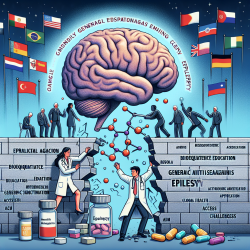Introduction
In the ever-evolving field of speech-language pathology, staying abreast of innovative research and its practical applications is crucial. One such groundbreaking study is the "Fabrication and Application of SERS-Active Cellulose Fibers Regenerated from Waste Resource," which explores the creation of flexible, eco-friendly SERS substrates. These substrates have significant potential for detecting toxins and chemicals, offering new avenues for application in various fields, including speech-language pathology.
Understanding SERS-Active Cellulose Fibers
The study highlights the fabrication of cellulose fibers regenerated from waste resources, which are then decorated with gold nanoparticles (Au NPs) to create SERS-active substrates. This eco-friendly approach not only addresses waste accumulation but also provides a cost-effective solution for creating sensitive and selective detection platforms.
Applications in Speech-Language Pathology
While the primary focus of the study is on detecting harmful substances, the underlying technology can be adapted for speech-language pathology. Here are a few potential applications:
- Environmental Monitoring: SERS-active cellulose fibers can be utilized to monitor environmental factors that may affect speech and language development, such as exposure to toxins or pollutants.
- Diagnostic Tools: The sensitivity of SERS technology can be harnessed to develop diagnostic tools that detect biomarkers related to speech and language disorders.
- Therapeutic Interventions: By identifying specific environmental or biological factors contributing to speech and language issues, practitioners can tailor interventions more effectively.
Encouraging Further Research
The study opens up numerous possibilities for further research. Speech-language pathologists are encouraged to explore the integration of SERS technology into their practice. Potential research areas include:
- Investigating the correlation between environmental toxins and speech-language disorders.
- Developing portable diagnostic devices using SERS technology for field assessments.
- Exploring the use of SERS substrates in biofeedback mechanisms to enhance therapy outcomes.
Conclusion
The integration of SERS-active cellulose fibers into speech-language pathology represents a promising intersection of nanotechnology and therapeutic practice. By leveraging this innovative research, practitioners can enhance their diagnostic and therapeutic capabilities, ultimately leading to improved outcomes for children.
To read the original research paper, please follow this link: Fabrication and Application of SERS-Active Cellulose Fibers Regenerated from Waste Resource.










